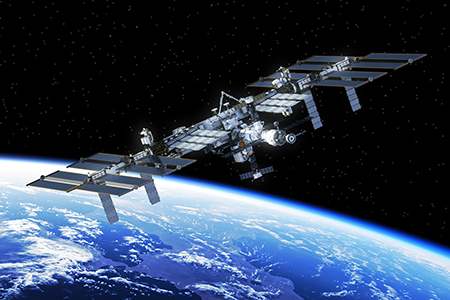 An article published recently in Science highlights the unique journey of two identical twins — Mark and Scott Kelly — who have enabled the study of extended space flight and the effects it has on the human body. Together, they spent a combined 574 days in space. Both are retired US Navy Captains and astronauts. Since identical twins share the same genetic makeup, studying the changes that took place to Scott Kelly while in space would provide clues as to how space affects our various functions.
An article published recently in Science highlights the unique journey of two identical twins — Mark and Scott Kelly — who have enabled the study of extended space flight and the effects it has on the human body. Together, they spent a combined 574 days in space. Both are retired US Navy Captains and astronauts. Since identical twins share the same genetic makeup, studying the changes that took place to Scott Kelly while in space would provide clues as to how space affects our various functions. Some of the aspects studied were: physiological, telomeric, transcriptomic, epigenetic, proteomic, metabolomic, micro-biomic, immune, cardiovascular, vision, and cognition.
While Scott Kelly spent 340 days in space, the research team continued to monitor him for a total of 25 months to determine if any changes they saw would return to baseline upon his return to earth1.
Effects of Short-Term Space Travel
Two key physiological features that have been studied in astronauts returning from extended days on the International Space Station are changes to the musculoskeletal and cardiovascular systems. Muscles in space atrophy due to the lack of physical exercise, while bones become more porous and thin. Once back on Earth, these issues are fairly easy to remedy with regular vigorous exercise and proper nutrition.The effects of microgravity and stress on the heart have also been documented in astronauts. Some conditions seen are arterial stiffening, left ventricle enlargement, and radiation-induced cardiovascular disease2.
Genetic Impacts of Living in Space
There were at least two major changes to Scott Kelly's body that were distinctly different from his brother.At the chromosomal level, Scott Kelly's telomerase was more active in space, leading to longer telomeres. Telomeres are the "protective ends" at the tips of chromosomes which usually shorten due to natural aging.
Interestingly, when Scott Kelly returned to earth, his telomeres reduced to much shorter lengths. One possible explanation for this is the negative effects of stress on the length of telomeres, but there are likely additional factors at play as well.
A second major change was in the activity of mitochondrial and immune-related genes from Scott Kelly's cells. Mark's gene expression on Earth varied according to diet and routine activities, but not nearly as much as his brother's. Studies in Scott post-spaceflight showed that these increased levels of gene expression did return to baseline levels after a period of time.
A few other categories of changes that were seen in Scott Kelly were: the composition of his gut microbiome, a temporary increase and then subsequent decrease in his cognitive functions, and a thickening of his retinal nerve (which has been observed in other astronauts as well).
Animal Model Experiments in Space
While this first-of-a-kind study is extremely important for understanding the effects of microgravity on the human body, it is not without risk and difficulty. In order to study the physiological effects of microgravity on mammals, scientists at NASA regularly send mice and rats into space as part of the Rodent Research missions.Mice are genetically-similar to humans, but develop faster and can adequately mimic human aging, with a 12-month-old mouse equivalent to a middle-aged man. Additionally, their small size allows for the study of a group of research animals at one time. Due to the increasing interest in human space travel, studies such as this highlight the need for continued research into how microgravity affects the body in the long- and short-term.
















.jpg)

.jpg)
.jpg)
.jpg)
.jpg)





.jpg)


.jpg)
.jpg)




.jpg)




.jpg)

.jpg)



